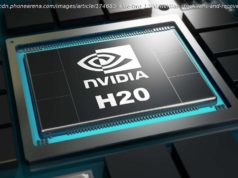F1 tech has influenced sectors from aeronautics to public transport – now healthcare is benefiting.
Formula 1 technology has had an impact in many other sectors, from aeronautics to cycling, public transport to data analytics, but now Williams has come up with a hi-tech carrier for critically ill new-born babies.
Every year the Williams Formula 1 team spends more than £100m ($130m; 114m euros) trying to make two cars go round a racing track as fast as possible.
Ignore the adrenaline-fuelled appeal of wheel-to-wheel racing, and it might all seem rather pointless. Yet the technology developed in the white heat of competition can turn up in some surprising places.
The materials and techniques used to build Williams’ F1 cars, for example, are now being used to make an altogether different type of transport – for new-born babies.
The Babypod 20, as it is known, is a sleek, lightweight box with a sliding transparent lid and a heavily padded interior. It is designed for transporting infants who are critically ill, whether by car, ambulance or helicopter.
It looks pretty basic, but is the result of an intensive development process. The material used in the design is carbon fibre, the same remarkably strong material used in F1 cars.
The pod is being built by Williams Advanced Engineering, a sister business to the Formula 1 team, based at the same UK site in Grove, Oxfordshire.
The firm has been working on the new design alongside Advanced Healthcare Technology (AHT) , a company that has been building transport systems for babies for a number of years.
Carrying new-born babies from place to place is not easy.
They need to be kept at a constant temperature and protected from vibration and noise, while being monitored closely by medical staff.
In the past, incubators were used. But these are heavy, cumbersome devices, that require an external electricity supply and often dedicated vehicles to carry them as well.
The Babypod was initially developed by AHT as a lightweight and more practical alternative. Williams was then called in to develop a new, more advanced design.
The result is a device that weighs just 9.1kg (20lb) – about the same as three bricks – takes up relatively little space, and that can withstand an impact of up to 20G (in case the ambulance carrying it is involved in an accident, for example) .
To begin with, it is being used by the Children’s Acute Transport Service (CATS) of Great Ormond Street Hospital in London, though the plan is to market it much more widely.
CATS operational manager Eithne Polke says the service is delighted with the new pod, which costs £5,000 per unit.
Fast and effective transportation can save lives in emergency situations, she says, and the pod « allows for greater flexibility and manoeuvrability when moving critically ill infants « .
More Technology of Business
Williams Advanced Engineering was set up in 2010 to make broader use of the technology and expertise developed at such huge expense in Formula 1.
Much of what it does is still linked to the automotive sector.
For example, it helped design a hybrid supercar for Jaguar, as well as an electric version of Aston Martin’s Rapide sportscar – known as the RapidE.
But it has also branched out into other areas – designing energy storage systems for solar power projects, for example.
Tucked away in a corridor of the factory is what looks like a fairly normal supermarket fridge – except that the edge of each shelf, where you’d normally see a price tag, is a bit broader and curvier than normal.
It is, in fact, an aerofoil, designed to channel cold air down the front of the fridge, rather than allowing it to spill out into the supermarket aisle. This makes the fridge more efficient, cheaper to run, and keeps customers warmer.
It may be a world away from Formula 1 – but it uses the same expertise in aerodynamics.
According to Clare Williams, deputy principal of the F1 team, there’s plenty of room for F1 know-how to be exploited in this way.
« Lightweight materials, composites, aerodynamics… all of these technologies can be so easily applied to other industries, other sectors, other project and products, » she says, « in order invariably to make them better, but most importantly – sometimes safer.
« And that’s the case with the Babypod. »
Rival F1 team McLaren also has its own engineering and design spin-off – McLaren Applied Technologies – which has contributed its expertise to a diverse range of companies, from cycle-maker Specialized, to deep-sea drilling firm Ecofisk.
Fundamentally though, these applied engineering businesses have one overriding purpose: to generate much-needed money for the F1 team.
So far, Williams Advanced Engineering has been moderately successful.
It contributed £37m to the group’s revenues last year, out of a total of £167m. And profit – before interest, tax, depreciation and amortisation – was £4.2m.
In a sport which guzzles cash as fast as the cars involved use fuel, that may not seem like a great deal. But as Williams struggles to compete with much richer teams like Ferrari, Mercedes and Red Bull, it needs every penny.
« The F1 team is still at the heart of what we do », says Ms Williams.
« Racing is in our DNA. But we have branched out and diversified – and having that revenue stream from Advanced Engineering will be, one day, hugely important for us. »
And if the Babypod is a success, in future there may be a fair few people walking around who owe their lives to technology developed in Formula 1.






